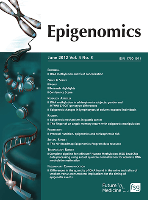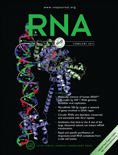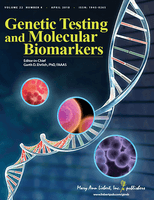
Non-Coding RNA
Scope & Guideline
Innovating the Future of Genomic Research
Introduction
Aims and Scopes
- Exploration of Non-Coding RNA Functions:
Research articles delve into the diverse roles of various types of non-coding RNAs, including long non-coding RNAs (lncRNAs), microRNAs (miRNAs), and circular RNAs (circRNAs), in gene regulation, cellular processes, and disease mechanisms. - Clinical Applications and Biomarker Discovery:
The journal emphasizes the potential of ncRNAs as clinical biomarkers for disease diagnosis, prognosis, and treatment monitoring, particularly in cancer and metabolic disorders. - Epigenetic and Post-Transcriptional Regulation:
Studies often focus on the epigenetic mechanisms and post-transcriptional modifications that influence ncRNA expression and function, providing insights into their regulatory roles in various physiological and pathological contexts. - Integration of Multi-Omics Approaches:
Research frequently employs multi-omics strategies to investigate the interplay between ncRNAs and other molecular entities (e.g., mRNAs, proteins), enhancing the understanding of complex biological networks. - Innovative Methodologies in RNA Research:
The journal publishes articles that introduce novel experimental and computational techniques for studying ncRNAs, including RNA sequencing, bioinformatics tools, and CRISPR-based approaches.
Trending and Emerging
- Therapeutic Targeting of Non-Coding RNAs:
There is a growing interest in developing therapeutic strategies that target specific ncRNAs, particularly in cancer treatment, indicating their potential as novel therapeutic agents. - Role of Non-Coding RNAs in Disease Mechanisms:
Increased attention is being paid to the role of ncRNAs in various diseases, particularly in cancer, metabolic disorders, and autoimmune diseases, underscoring their importance in pathogenesis. - Bioinformatics and Computational Approaches:
The integration of bioinformatics tools and machine learning techniques to analyze ncRNA data is on the rise, facilitating the identification of ncRNA interactions and regulatory networks. - Extracellular Vesicle-Associated Non-Coding RNAs:
Research on the role of ncRNAs in extracellular vesicles (e.g., exosomes) is gaining traction, highlighting their potential as biomarkers and mediators of intercellular communication. - Circular RNAs in Health and Disease:
Circular RNAs are increasingly recognized for their regulatory roles, leading to a surge in research focused on their functions and implications in various diseases.
Declining or Waning
- Basic Mechanistic Studies on ncRNAs:
There seems to be a reduction in purely mechanistic studies that focus on the basic biology of ncRNAs without immediate clinical relevance, as more research is directed towards translational applications. - Studies on Non-Coding RNAs in Non-Human Models:
Research involving non-human models (e.g., plants, lower organisms) has decreased, possibly as focus shifts towards human health and disease implications of ncRNAs. - Exploratory Studies on Less Characterized ncRNAs:
The exploration of lesser-known or newly discovered non-coding RNAs appears to be waning, with a greater emphasis now on well-characterized ncRNAs that have established roles in diseases.
Similar Journals

NAR Cancer
Innovating diagnostics and treatments for tomorrow's healthcare.NAR Cancer, published by Oxford University Press, is a pioneering open access journal established to advance the rapidly evolving field of cancer research. Since its inception in 2019, this journal has gained substantial recognition, achieving a prestigious Q1 ranking in both Cancer Research and Oncology categories as of 2023. With a focused objective to disseminate high-quality research, reviews, and insights into innovative cancer treatments and diagnostics, NAR Cancer serves as an essential platform for researchers, healthcare professionals, and students alike. The journal is accessible for all since it became open access in 2020, ensuring a global reach and impact. Positioned in the competitive landscape of oncology, with impressive Scopus rankings, it offers a unique opportunity for contributors to share their work with an engaged and interdisciplinary audience. With a commitment to excellence, NAR Cancer is dedicated to driving forward the understanding and management of cancer worldwide.

Molecular Cancer
Fostering collaboration for groundbreaking cancer research.Molecular Cancer, published by BMC, stands as a premier open access journal dedicated to advancing our understanding of cancer biology, treatment, and prevention since its inception in 2002. With an impressive Q1 ranking in the domains of Cancer Research, Molecular Medicine, and Oncology, this journal occupies a significant position in the academic landscape, emphasizing high-quality research that influences clinical practices and future studies. The journal is indexed in leading databases with exceptional Scopus ranks, reflecting its rigorous peer-review process and impactful contributions to the field, where it ranks in the top 2-3 positions across various relevant categories. Based in the United Kingdom, Molecular Cancer offers researchers worldwide a valuable platform for disseminating innovative findings that drive the biomedical community forward. The journal's open access model ensures that groundbreaking research is freely accessible, fostering collaboration and knowledge sharing among professionals, students, and academics alike. Explore cutting-edge developments in cancer research through Molecular Cancer and join a community committed to improving patient outcomes and advancing scientific discovery.

Epigenomics
Connecting Genes and Epigenomes for a Healthier Future.Epigenomics is a leading journal in the realms of Cancer Research and Genetics, published by Future Medicine Ltd in the United Kingdom. With an ISSN of 1750-1911 and an E-ISSN of 1750-192X, the journal has been an integral part of the scientific community since its inception in 2009, and is set to converge its impactful research publications through 2024. The journal occupies a significant position in its category quartiles as evidenced by its ranking—Q3 in Cancer Research and Q2 in Genetics as of 2023. With Scopus rankings of #138/347 in Genetics and #113/230 in Cancer Research, it demonstrates scholarly excellence and is recognized for its contributions to understanding the role of epigenetic modifications in health and disease. While Epigenomics operates under traditional subscription models, it remains a vital resource for researchers, professionals, and students eager to explore the complex interplay between genes and the epigenome. The journal's innovative approach to epigenetics and its impact on cancer research makes it essential reading for those at the forefront of biomedical research.

Non-coding RNA Research
Elevating the Dialogue on Non-Coding RNA InnovationsNon-coding RNA Research, published by KEAI PUBLISHING LTD, is a leading open-access journal dedicated to advancing the field of non-coding RNA, a critical component in the landscape of molecular biology and genetics. Established in 2016, this journal aims to provide a platform for the dissemination of high-quality research focusing on the roles, mechanisms, and therapeutic potentials of non-coding RNAs in various biological processes and diseases. With impressive Scopus rankings placing it in the top quartile for both Biochemistry and Medical Biochemistry, as well as notable standings in Genetics and Molecular Biology, Non-coding RNA Research continues to attract contributions from globally recognized experts. The journal's commitment to open access ensures broad visibility and engagement with cutting-edge discoveries, thereby fostering an inclusive scientific dialogue that enhances understanding and innovation in this rapidly evolving field. For researchers and scholars, the opportunity to publish in a Q1 ranked journal not only validates their work but also enhances its impact, making Non-coding RNA Research an indispensable resource for anyone interested in the intricate workings of non-coding RNA.

DNA AND CELL BIOLOGY
Illuminating the Path of Cellular AdvancementsDNA AND CELL BIOLOGY, published by Mary Ann Liebert, Inc, is a distinguished journal in the realms of cell biology, genetics, and molecular biology, holding a notable position in its Q3 and Q2 quartile rankings across multiple academic categories as of 2023. With an ISSN of 1044-5498 and an E-ISSN of 1557-7430, this journal has been a pivotal platform for the dissemination of cutting-edge research since its inception in 1990, extending its coverage through 2024. Situated in the United States, the journal offers high-quality peer-reviewed articles, exploring significant advancements in biological sciences while fostering interdisciplinary collaborations within the research community. Though it currently does not offer open access, subscribed institutions and individual readers benefit from its rich repository of knowledge. The journal's rigorous standards and impactful content make it an essential resource for researchers, professionals, and students alike, aiming to stay at the forefront of discoveries influencing DNA and cellular dynamics.

BIOCHEMICAL GENETICS
Driving Impactful Research in Biochemical GeneticsBIOCHEMICAL GENETICS, published by Springer/Plenum Publishers, is a prominent journal in the fields of biochemistry, genetics, and molecular biology, with a substantial impact on the scientific community since its inception in 1967. The journal holds a significant position within various academic quartiles, ranking Q2 in Ecology, Evolution, Behavior and Systematics, and Q3 in Biochemistry, Genetics, and Medicine (miscellaneous), among others, demonstrating its diverse and interdisciplinary reach. With an ISSN of 0006-2928 and an E-ISSN of 1573-4927, it is recognized for contributing critical research insights and methodologies that drive the fields of biochemical genetics forward. Although it is not an Open Access journal, it provides vital access options and resources for researchers globally, facilitating the dissemination of knowledge across institutions. Positioned within the competitive landscape of Scopus rankings, it maintains respectable standings across its focused areas, making it an invaluable resource for researchers, professionals, and students seeking to deepen their understanding of genetic mechanisms and biochemical processes.

MOLECULAR BIOLOGY
Advancing the Frontiers of Molecular DiscoveryMOLECULAR BIOLOGY, published by PLEIADES PUBLISHING INC, serves as a vital repository for the dissemination of innovative research within the fields of biochemistry, genetics, and molecular biology. With an ISSN of 0026-8933 and an E-ISSN of 1608-3245, this journal has been a mainstay in the scientific community since its inception, embracing its deep historical roots from 1971 to the present. Recognized for its qualitative contributions, MOLECULAR BIOLOGY is ranked in the Q3 quartile for Biophysics and Q4 for Structural Biology, placing it among select journals in its domain. Researchers and students alike benefit from its rigorous peer-reviewed articles, which focus on all aspects of molecular mechanisms and interactions. The journal's inclusion in prestigious databases underlines its commitment to academic excellence. The editorial board is dedicated to fostering the sharing of influential findings, making it an essential resource for advancing knowledge and innovation in molecular biology.

CELLULAR SIGNALLING
Unlocking the Secrets of Signal TransductionCELLULAR SIGNALLING, published by Elsevier Science Inc, is a premier journal within the realm of Cell Biology, boasting an impressive Q2 category ranking as of 2023. With an ISSN of 0898-6568 and an E-ISSN of 1873-3913, the journal has established itself as a critical platform for advancing the understanding of cellular mechanisms and signal transduction pathways since its inception in 1989. Covering a vast array of topics in Biochemistry, Genetics, and Molecular Biology, it ranks notably at 87 out of 285 in the Scopus list, placing it in the 69th percentile among its peers. The journal serves as an invaluable resource for researchers, professionals, and students seeking high-quality, impactful studies that drive forward the field of cellular biology. While it operates under traditional subscription access, its highlights include rigorous peer-reviewed articles, reviews, and insights that continue to shape current scientific discourse.

RNA
Advancing the Frontiers of RNA ResearchRNA is a premier journal in the field of molecular biology, published by COLD SPRING HARBOR LAB PRESS, PUBLICATIONS DEPT. With an impressive impact factor reflected by its Q1 status in the Molecular Biology category, this journal has established itself as an essential resource for researchers and professionals dedicated to understanding the role of RNA in biological processes. Spanning over two decades of impactful research from 1995 to 2024, RNA covers a broad spectrum of topics, including RNA biology, gene regulation, and therapeutic innovations. Researchers can access its extensive array of original research articles, reviews, and commentary, making it a vital conduit for new discoveries and methodologies in the field. With its high ranking within Scopus at Rank #115/410 and a 72nd percentile ranking in the domain of Biochemistry, Genetics, and Molecular Biology, RNA continues to advance the understanding of RNA and its critical contributions to life sciences.

Genetic Testing and Molecular Biomarkers
Unlocking Insights at the Intersection of Genetics and Medicine.Genetic Testing and Molecular Biomarkers, an esteemed journal published by MARY ANN LIEBERT, INC, serves as a pivotal platform for advancing the field of genetic research and its applications in medicine. Focused on the innovative intersections of genetics and biomarker discovery, this journal has consistently contributed meaningful insights since its inception in 2009, with its scope evolving through 2024. With an ISSN of 1945-0265 and an E-ISSN of 1945-0257, it offers both traditional and open access options to cater to a broad audience of researchers, professionals, and students. Despite its current classification in the Q4 and Q3 quartiles for Genetics (clinical) and Medicine (miscellaneous) respectively, the journal remains committed to publishing high-quality, peer-reviewed articles that push the boundaries of knowledge in the field. As the landscape of genomic medicine continues to expand, Genetic Testing and Molecular Biomarkers is positioned as a crucial resource for disseminating cutting-edge discoveries and fostering interdisciplinary collaboration.